-
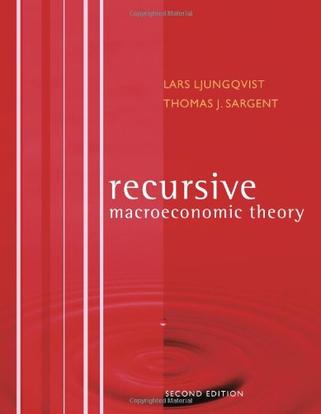
Recursive Macroeconomic Theory
Recursive methods offer a powerful approach for characterizing and solving complicated problems in dynamic macroeconomics. Recursive Macroeconomic Theory provides both an introduction to recursive methods and advanced material, mixing tools and sample applications. The second edition contains substantial revisions to about half the original material, and extensive additional coverage appears in seven chapters new to this edition. The updated and added material covers exciting new topics that further illustrate the power and pervasiveness of recursive methods.Significant improvements to original chapters include a better treatment of the existence of recursive equilibria, an enhanced account of the supermartingale convergence theorem, and an extended treatment of an optimal taxation problem in an economy in which there are incomplete markets. Completely new coverage in the second edition includes an introductory chapter, which gives an overview of the themes uniting the diverse topics treated throughout the book. Two new chapters offer a self-contained account of the optimal growth model and some of its basic applications in macroeconomics and public finance. Other new chapters cover such topics as how to formulate and compute Stackelberg or Ramsey plans in linear economies, sustainable risk-sharing equilibria without commitment, and the application of recursive contracts to topics in international trade. Most chapters conclude with exercises and the book includes two technical appendixes covering functional analysis and control and filtering. -
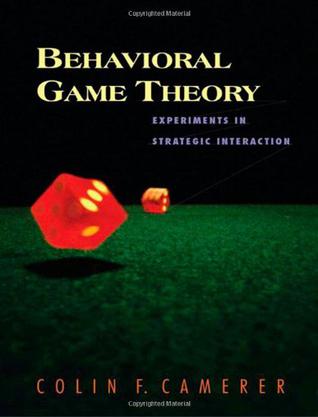
Behavioral Game Theory
Game theory, the formalized study of strategy, began in the 1940s by asking how emotionless geniuses should play games, but ignored until recently how average people with emotions and limited foresight actually play games. This book marks the first substantial and authoritative effort to close this gap. Colin Camerer, one of the field's leading figures, uses psychological principles and hundreds of experiments to develop mathematical theories of reciprocity, limited strategizing, and learning, which help predict what real people and companies do in strategic situations. Unifying a wealth of information from ongoing studies in strategic behavior, he takes the experimental science of behavioral economics a major step forward. He does so in lucid, friendly prose. Behavioral game theory has three ingredients that come clearly into focus in this book: mathematical theories of how moral obligation and vengeance affect the way people bargain and trust each other; a theory of how limits in the brain constrain the number of steps of 'I think he thinks...' reasoning people naturally do; and a theory of how people learn from experience to make better strategic decisions. Strategic interactions that can be explained by behavioral game theory include bargaining, games of bluffing as in sports and poker, strikes, how conventions help coordinate a joint activity, price competition and patent races, and building up reputations for trustworthiness or ruthlessness in business or life. While there are many books on standard game theory that address the way ideally rational actors operate, "Behavioral Game Theory" stands alone in blending experimental evidence and psychology in a mathematical theory of normal strategic behavior. It is must reading for anyone who seeks a more complete understanding of strategic thinking, from professional economists to scholars and students of economics, management studies, psychology, political science, anthropology, and biology. -
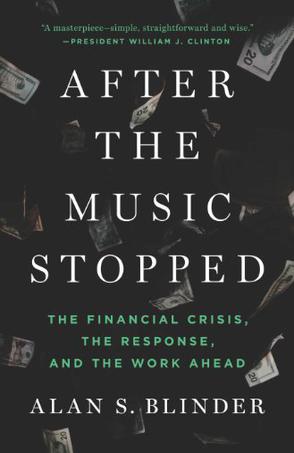
After the Music Stopped
One of our wisest and most clear-eyed economic thinkers offers a masterful narrative of the crisis and its lessons Many fine books on the financial crisis were first drafts of history—books written to fill the need for immediate understanding. Alan S. Blinder, esteemed Princeton professor, Wall Street Journal columnist, and former deputy chairman of the Federal Reserve Board, held off, taking the time to understand the crisis and to think his way through to a truly comprehensive and coherent narrative of how the worst economic crisis in postwar American history happened, what the government did to fight it, and what we can do from here—mired as we still are in its wreckage. With bracing clarity, Blinder shows us how the U.S. financial system, which had grown far too complex for its own good—and too unregulated for the public good—experienced a perfect storm beginning in 2007. Things started unraveling when the much-chronicled housing bubble burst, but the ensuing implosion of what Blinder calls the “bond bubble” was larger and more devastating. Some people think of the financial industry as a sideshow with little relevance to the real economy—where the jobs, factories, and shops are. But finance is more like the circulatory system of the economic body: if the blood stops flowing, the body goes into cardiac arrest. When America’s financial structure crumbled, the damage proved to be not only deep, but wide. It took the crisis for the world to discover, to its horror, just how truly interconnected—and fragile—the global financial system is. Some observers argue that large global forces were the major culprits of the crisis. Blinder disagrees, arguing that the problem started in the U.S. and was pushed abroad, as complex, opaque, and overrated investment products were exported to a hungry world, which was nearly poisoned by them. The second part of the story explains how American and international government intervention kept us from a total meltdown. Many of the U.S. government’s actions, particularly the Fed’s, were previously unimaginable. And to an amazing—and certainly misunderstood—extent, they worked. The worst did not happen. Blinder offers clear-eyed answers to the questions still before us, even if some of the choices ahead are as divisive as they are unavoidable. After the Music Stopped is an essential history that we cannot afford to forget, because one thing history teaches is that it will happen again. -
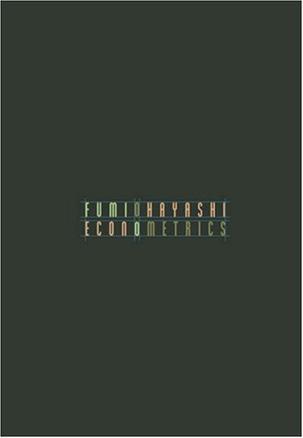
Econometrics
Hayashi's "Econometrics" promises to be the next great synthesis of modern econometrics. It introduces first year PhD students to standard graduate econometrics material from a modern perspective. It covers all the standard material necessary for understanding the principal techniques of econometrics from ordinary least squares through cointegration. The book is also distinctive in developing both time-series and cross-section analysis fully, giving the reader a unified framework for understanding and integrating results. "Econometrics" has many useful features and covers all the important topics in econometrics in a succinct manner. All the estimation techniques that could possibly be taught in a first-year graduate course, except maximum likelihood, are treated as special cases of GMM (generalized methods of moments). Maximum likelihood estimators for a variety of models (such as probit and tobit) are collected in a separate chapter. This arrangement enables students to learn various estimation techniques in an efficient manner. Eight of the ten chapters include a serious empirical application drawn from labor economics, industrial organization, domestic and international finance, and macroeconomics. These empirical exercises at the end of each chapter provide students a hands-on experience applying the techniques covered in the chapter. The exposition is rigorous yet accessible to students who have a working knowledge of very basic linear algebra and probability theory. All the results are stated as propositions, so that students can see the points of the discussion and also the conditions under which those results hold. Most propositions are proved in the text. For those who intend to write a thesis on applied topics, the empirical applications of the book are a good way to learn how to conduct empirical research. For the theoretically inclined, the no-compromise treatment of the basic techniques is a good preparation for more advanced theory courses. -
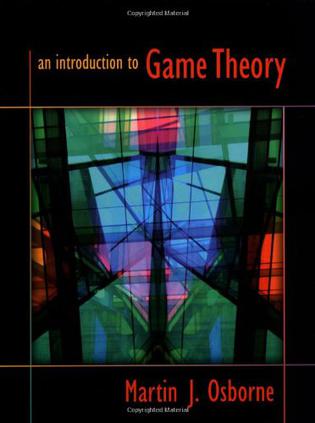
An Introduction to Game Theory
An exposition of modern game theory suitable for advanced undergraduates. The book emphasizes the ideas behind the theory rather than their mathematical expression, but defines all concepts precisely. It covers strategic, extensive and coalitional games and includes the topics of repeated games, bargaining theory and evolutionary equilibrium. -
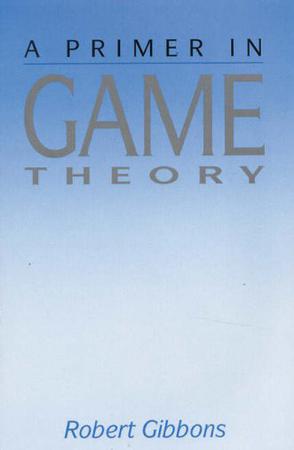
A Primer in Game Theory
Game theory has revolutionized economics research and teaching during the past two decades. There are few undergraduate or graduate courses in which it does not form a core component. Game theory is the study of multi-decision problems and such problems occur frequently in economics. Industrial organization provides many examples where firms must consider the reactions of others. But there are many other areas in which it is applicable - from individual workers vying for promotion to countries competing or colluding to choose trade policies. Bob Gibbons provides an introduction to the branches of game theory that have been widely applied in economics. He emphasizes the applications as much as the pure theory. This not only helps to teach the theory, but also illustrates the process of model building - the process of translating an informal description of a multi-person decision situation into a formal, game theoretic problem to be analyzed. The approach aims to serve as both an introduction to those who will go on to specialize as pure game-theorists. It also introduces game theory to those who will later construct (or at least use) game-theoretic models in applied fields of economics.